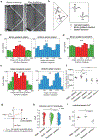Directional Cell Migration Guided by a Strain Gradient
- PMID: 37735983
- PMCID: PMC11467785
- DOI: 10.1002/smll.202302404
Directional Cell Migration Guided by a Strain Gradient
Abstract
Strain gradients widely exist in development and physiological activities. The directional movement of cells is essential for proper cell localization, and directional cell migration in responses to gradients of chemicals, rigidity, density, and topography of extracellular matrices have been well-established. However; it is unclear whether strain gradients imposed on cells are sufficient to drive directional cell migration. In this work, a programmable uniaxial cell stretch device is developed that creates controllable strain gradients without changing substrate stiffness or ligand distributions. It is demonstrated that over 60% of the single rat embryonic fibroblasts migrate toward the lower strain side in static and the 0.1 Hz cyclic stretch conditions at ≈4% per mm strain gradients. It is confirmed that such responses are distinct from durotaxis or haptotaxis. Focal adhesion analysis confirms higher rates of contact area and protrusion formation on the lower strain side of the cell. A 2D extended motor-clutch model is developed to demonstrate that the strain-introduced traction force determines integrin fibronectin pairs' catch-release dynamics, which drives such directional migration. Together, these results establish strain gradient as a novel cue to regulate directional cell migration and may provide new insights in development and tissue repairs.
Keywords: cell stretching devices; focal adhesion; mechanotransduction; motor-clutch model; single cell migration; strain gradient; tensotaxis; traction force.
© 2023 Wiley-VCH GmbH.
Conflict of interest statement
Conflict of Interest
The authors declare no conflict of interest.
Figures





Similar articles
-
Competing elastic and viscous gradients determine directional cell migration.Math Biosci. 2025 Feb;380:109362. doi: 10.1016/j.mbs.2024.109362. Epub 2024 Dec 17. Math Biosci. 2025. PMID: 39701208
-
Positive and negative durotaxis - mechanisms and emerging concepts.J Cell Sci. 2024 Apr 15;137(8):jcs261919. doi: 10.1242/jcs.261919. Epub 2024 Apr 22. J Cell Sci. 2024. PMID: 38647525 Review.
-
Force fluctuations within focal adhesions mediate ECM-rigidity sensing to guide directed cell migration.Cell. 2012 Dec 21;151(7):1513-27. doi: 10.1016/j.cell.2012.11.034. Cell. 2012. PMID: 23260139 Free PMC article.
-
Actomyosin contractility and RhoGTPases affect cell-polarity and directional migration during haptotaxis.Integr Biol (Camb). 2016 Oct 10;8(10):1067-1078. doi: 10.1039/c6ib00152a. Integr Biol (Camb). 2016. PMID: 27713970
-
Dimensions and dynamics in integrin function.Braz J Med Biol Res. 2003 Aug;36(8):959-66. doi: 10.1590/s0100-879x2003000800001. Epub 2003 Jul 23. Braz J Med Biol Res. 2003. PMID: 12886449 Review.
Cited by
-
Learning via mechanosensitivity and activity in cytoskeletal networks.ArXiv [Preprint]. 2025 Apr 21:arXiv:2504.15107v1. ArXiv. 2025. PMID: 40313666 Free PMC article. Preprint.
-
Magnetic Resonance Elastography and Computational Modeling Identify Heterogeneous Lung Biomechanical Properties during Cystic Fibrosis.Res Sq [Preprint]. 2024 Mar 21:rs.3.rs-4125891. doi: 10.21203/rs.3.rs-4125891/v1. Res Sq. 2024. PMID: 38562870 Free PMC article. Preprint.
References
-
- Swartz MA, Fleury ME, Annu. Rev. Biomed. Eng. 2007, 9, 229. - PubMed
Publication types
MeSH terms
Grants and funding
LinkOut - more resources
Full Text Sources

